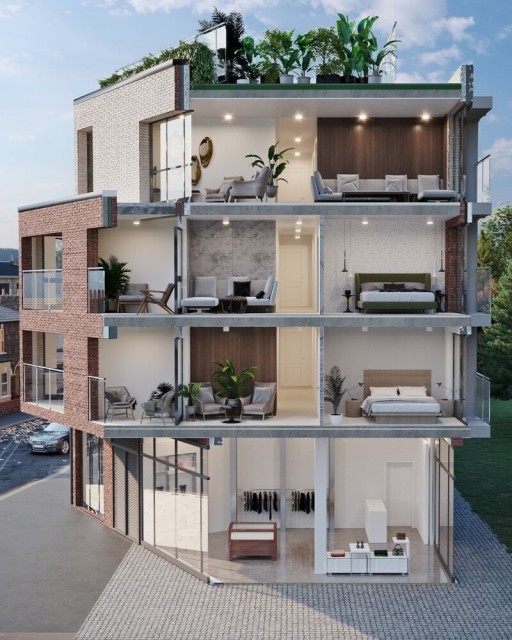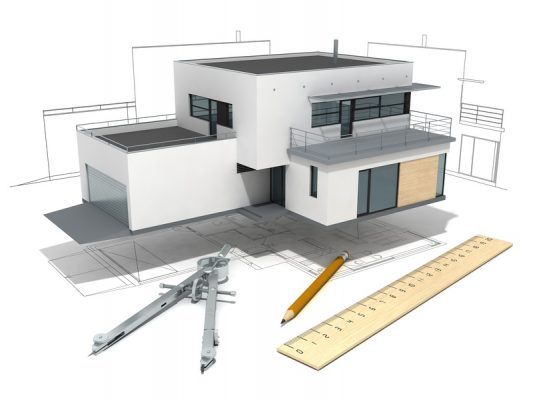Top Patterns in Residential Style You Need To Find Out About
As household design remains to progress, several engaging patterns are shaping the method we design and occupy our living spaces. Secret developments such as sustainable building techniques, the assimilation of wise home innovation, and the rise of modular homes emphasize a significant shift towards both performance and ecological responsibility. Furthermore, concepts like open plan living and biophilic layout are redefining our interaction with room and nature. Comprehending these fads not only notifies style selections but also exposes more comprehensive effects for lifestyle and neighborhood - residential house architect. What might these advancements suggest for the future of residential living?
Lasting Building Practices
An enhancing number of domestic jobs are welcoming lasting building techniques, driven by an expanding recognition of environmental impact and energy efficiency. This change is defined by the combination of eco-friendly products, energy-efficient designs, and ingenious building techniques. Homeowners and builders are increasingly focusing on using renewable energies, such as bamboo and recycled metals, which not just minimize the carbon impact but also boost the resilience and visual allure of residential properties.
Incorporating energy-efficient systems is one more important element of lasting building - residential house architect. Functions such as high-performance insulation, energy-efficient windows, and photovoltaic panels are becoming criterion in brand-new property layouts. These components not only add to lower power usage yet also give considerable long-term cost savings for property owners
In addition, the design of lasting homes typically stresses all-natural light and ventilation, minimizing the reliance on man-made lights and climate control systems. Landscaping methods, such as xeriscaping, additional promote sustainability by decreasing water usage.
As the need for lasting living solutions remains to climb, the residential style industry is positioned to adapt and introduce, ensuring that future homes are not only ecologically responsible however useful and additionally comfy for their owners. - residential house architect
Smart Home Technology
Smart home innovation is changing the means home owners engage with their space, enhancing safety and security, energy, and benefit administration. This cutting-edge method integrates different tools and systems, permitting customers to control their homes remotely or through automated processes. Central to this fad is making use of clever tools such as thermostats, lights, safety electronic cameras, and devices, all attached by means of the Net of Points (IoT)
Among one of the most attractive functions of smart home innovation is the ability to customize setups for optimum power performance. Home owners can check power usage and adjust home heating, cooling, and lights based on their routines, dramatically minimizing utility costs. Sophisticated protection systems equipped with wise locks and surveillance electronic cameras offer peace of mind, making it possible for remote monitoring and signals to potential safety violations.
Combination with voice-activated aides improves individual experience, permitting house owners to control devices with basic voice commands. As technology remains to advance, the potential for wise home systems to improve lifestyle expands, making them a vital factor to consider in modern-day residential design. Inevitably, smart home innovation is not merely a pattern yet a fundamental shift towards extra intelligent living atmospheres.
Open Idea Living
Open concept living has arised as a specifying function in modern domestic architecture, identified by the elimination of conventional barriers between spaces. This design approach advertises fluidity and connectivity within the home, enabling for a seamless shift in between areas such as the kitchen area, dining, and living spaces. By getting rid of dividers and walls, open principle designs produce a feeling her latest blog of spaciousness, fostering a welcoming environment that improves social communication.

In addition, this technique to property style aligns with minimalism, concentrating on functional see it here simpleness and aesthetic comprehensibility. Homeowners appreciate the flexibility of these designs, which can be conveniently adjusted to show personal design via furniture plan and decoration. As open concept living remains to get traction, it continues to be a testimony to progressing household dynamics and the wish for homes that improve link and comfort.
Biophilic Layout
Biophilic design has actually come to be progressively considerable in residential design, stressing the intrinsic link between human beings and nature. This style ideology looks for to integrate all-natural aspects right into living areas, consequently cultivating a sense of well-being and boosting the quality of life for occupants. By including features such as natural light, plants, and organic products, biophilic style advertises a harmonious partnership between indoor environments and the environment.
Crucial element of biophilic design include huge windows that supply unobstructed sights of outdoor landscapes, living walls that present plant right into interiors, and open floor plans that urge air flow and all-natural light infiltration. Water functions, both inside and outside the home, serve to develop comforting ambiences and boost sensory experiences.
In addition, using lasting materials not just supports ecological stewardship however also contributes to much healthier interior air high quality. As recognition of ecological problems rises, homeowners are increasingly focusing on layouts that show their link to nature. Fundamentally, biophilic layout not just raises aesthetic charm yet likewise addresses mental and emotional requirements, making it a crucial trend in modern property design.
Modular and Prefab Houses

Moreover, prefab and modular homes are made with sustainability in mind. Many manufacturers use environment-friendly materials and energy-efficient systems, such as solar panels and advanced insulation strategies, adding to reduced power usage and lower energy costs for homeowners. The versatility of design choices permits customization, dealing with diverse functional needs and visual preferences.
As the demand for budget-friendly real estate proceeds to increase, modular and prefab homes present a sensible option, attending to both economic and environmental obstacles. Neighborhoods are increasingly identifying the capacity of these frameworks, integrating them right into rural and urban setups. On the whole, the pattern toward prefab and modular homes represents a change toward more sustainable, reliable, and adaptable living settings, making them a critical facet of contemporary household design.
Conclusion
Finally, the progressing landscape of residential design showcases significant trends that prioritize sustainability, modern technology, and wellness. Sustainable building techniques and smart home innovations boost efficiency and benefit, while open principle living and biophilic design foster social interaction and a link to nature. The surge of prefab and modular homes offers customizable and cost effective options, reflecting a wider change in the direction of practical and responsible living. These patterns collectively highlight a commitment to producing unified and cutting-edge property settings.
Secret advancements such as sustainable structure techniques, the integration of clever home modern technology, and the increase of modular homes highlight a significant change in the direction of both performance and environmental responsibility.The rise of prefab and modular homes has actually transformed the household style landscape, using ingenious remedies for reliable and sustainable living.Moreover, prefab and modular homes are created with sustainability in mind. In general, the trend toward prefab and modular homes symbolizes a shift towards much more lasting, effective, and versatile living settings, making them an essential aspect of modern domestic architecture.
Lasting building methods and wise home technologies boost efficiency and ease, while open idea living and biophilic layout foster social interaction and a connection to nature.